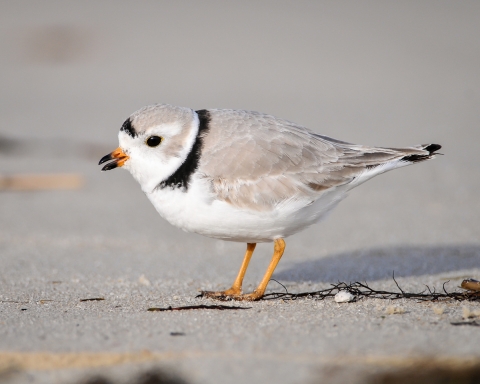Visit Us
The Archie Carr National Wildlife Refuge stretches across 20.5 miles between Melbourne Beach and Wabasso Beach along Florida's east coast in Brevard and Indian River Counties. The refuge is a relaxing retreat to observe wildlife, fish, hike, and learn about the endangered and threatened wildlife that utilizes Archie Carr National Wildlife Refuge. Visit the Barrier Island Center at Doc Ehrhart Sanctuary for more educational opportunities.
Please note, the Refuge does not conduct sea turtle walks, digs or releases. There are several non-profit organizations in the area that offer these experiences.
Location and Contact Information
About Us
The Archie Carr National Wildlife Refuge is located in Brevard and Indian River Counties of Florida. The refuge was established in 1991 and was named after the late Dr. Archie Carr, Jr., in honor of his extraordinary contribution to sea turtle conservation. The Refuge hosts a variety of birds, reptiles, fish, mammals and invertebrates including brown pelicans, sea turtles, gopher tortoises, snakes, manatees, and crabs that make their homes in the ocean as well as on several habitats including the beach and dunes, coastal strand and scrub, maritime hammock, and mangroves.
What We Do
Wildlife conservation is at the heart of the National Wildlife Refuge System. It drives everything on U.S. Fish and Wildlife Service lands and waters managed within the Refuge System, from the purposes for which a national wildlife refuge national wildlife refuge
A national wildlife refuge is typically a contiguous area of land and water managed by the U.S. Fish and Wildlife Service for the conservation and, where appropriate, restoration of fish, wildlife and plant resources and their habitats for the benefit of present and future generations of Americans.
Learn more about national wildlife refuge is established to the recreational activities offered to the resource management tools used. Using conservation best practices, the Refuge System manages Service lands and waters to help ensure the survival of native wildlife species.
Our Species
The refuge was created to safeguard and protect lands for wildlife that utilize the beach and dunes systems, to protect endangered and threatened species, and to provide feeding, nesting, and roosting areas for migratory birds. Today, the refuge is one of the most productive nesting sites for Loggerhead sea turtles in the world.
Our Library
Visit our digital library to find fact sheets, brochures, and other refuge documents.



